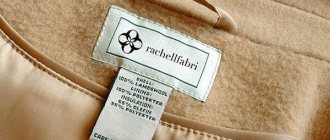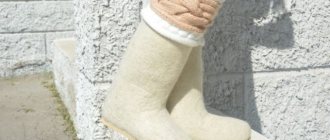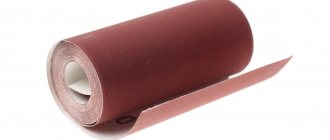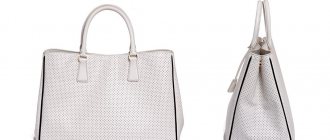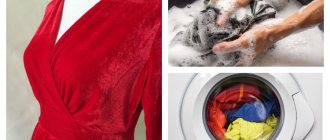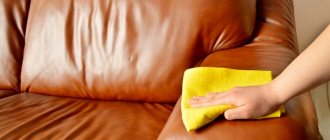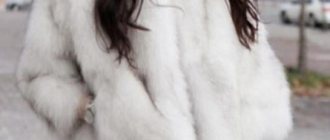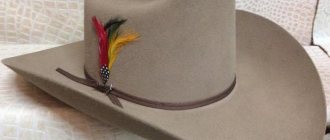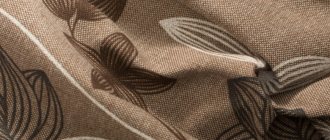The jacket is a popular wardrobe item that looks great with trousers, skirts and even jeans.
With the right combination, it will help create a casual, business or evening look. However, a jacket, unlike most other things, requires special care, and putting it in order on your own, without knowing the basic rules, is not so easy.
This is because not all jackets can be simply washed in a machine - they can lose their shape. It is too expensive to constantly send an item to the dry cleaner.
You can put things in order without much financial expense, but how to clean a jacket at home? For this, there are special methods of dry and wet cleaning. Let's start with the first one.
Getting rid of dirt and dust with dry cleaning
This method is suitable for removing small debris: hair, dust, threads, etc. This procedure can only be carried out when there is minor, superficial contamination of the item of clothing.
Dry cleaning a jacket at home is very simple - just take a soft brush or a special roller with an adhesive surface (sometimes even regular tape will do) and carefully walk over its surface.
You can also purchase a dry cleaning kit for these purposes.
Difficult stains are removed with soapy water.
This method is intended for more serious contamination. When wet cleaning, you first need to clean the areas that are damaged the most.
Then go over the entire surface of the jacket with a soap solution. First you need to prepare the product.
To do this, take three tablespoons of liquid soap and dissolve in 0.5 liters of warm water until a homogeneous mass is obtained.
Instead of liquid soap, you can also use laundry soap, having first finely planed it.
Then lightly dip the fleecy part of the brush into the solution and carefully work the fabric, trying not to wet the jacket too much. This way you can quickly clean men's and women's jackets.
How to care for the product?
Deep treatment of the jacket must be carried out as it gets dirty, depending on the intensity of wear.
Jackets worn daily should be cleaned once every 1–1.5 months; front (“to go out”) - less often, after 10–12 uses.
To restore freshness:
- The jacket needs to be shaken well and dust removed.
- Place on hangers above the bathtub.
- Using professional stain removers or improvised means, treat the collar, elbows, pockets, and armpit areas.
- Gently wash the material with a soft clothes brush and soapy water.
- Remove the foam with a damp cloth, being careful not to wet it too much.
- Clean the lining.
- Dry the fabric well. Blot excess moisture with a paper or terry towel.
- If necessary, steam or iron out creases and iron lapels.
The jacket needs regular care. Before placing it in the closet after use, it is necessary to remove dust, dirt, and remnants of cosmetics that have accumulated during the day from the fabric.
To do this, you can use a sticky roller for clothes, a slightly damp cloth, a sponge or a soft clothes brush. Do not rub or wet the fabric too much .
Home dry cleaning
Dry cleaning a jacket at home is not as difficult as it might seem at first glance. There are several cleaning options using various products, for example, ammonia, vodka, vinegar, raw potatoes, etc.
Cleaning a jacket with ammonia
One of the home methods for dry cleaning a jacket is to treat its surface with ammonia. The solution is easy to prepare.
To do this, you need to take and mix 6 tablespoons of ammonia with 1 teaspoon of soda. You can then clean your greasy jacket with this solution.
Make it more convenient either using a special roller or using another option - a soft sponge or a brush with soft bristles. As you can see, removing a stain from a jacket is not difficult.
Clean the jacket with vinegar or vodka
Another good and easy-to-use method for cleaning suits at home is using table vinegar.
Take a solution of vinegar and water, heat it slightly in a water bath, then dip a cotton swab in the vinegar and treat stains on clothes.
The method of using vodka when cleaning a jacket is identical with only one difference - the vodka does not need to be heated or diluted with water.
Cleaning a jacket with raw potatoes
For this procedure, you need to take a clean potato and cut it in half. Use the resulting cut to rub the greasy area of the jacket. Then we remove traces of potatoes with a cloth.
Removing stains using ammonia and alcohol
A solution of water, ammonia and medical alcohol perfectly cleans stains. To prepare it, you need to take 200 ml of water and one teaspoon each of alcohol and ammonia. Mix all components, and then treat the desired surface with a swab or cloth.
We treat the jacket with special means
Clothes cleaning solution can be purchased at any specialty store. Each product has instructions and you must act as indicated in it.
However, it is worth remembering one important point - the dry cleaning product must first be “tested”. For the experiment, a separate flap or the most inconspicuous part of the jacket is suitable, for example, inside the sleeve on the far side of the cuff.
Lightly work a small area and see how the fabric reacts to the solution. Start cleaning your jacket as soon as you are sure that the product will not ruin the item.
Should you clean your jacket with gasoline?
Some people advise removing greasy stains from a jacket using gasoline, but this method is rather dubious and unsafe. There is a huge risk that the stain will not only persist, but will become much larger and more noticeable.
Additional cleaning products for your jacket
In addition to all of the above products, the following products successfully fight against stains on jackets:
- With the help of ordinary lemon juice, you can effectively deal with all traces of ink or other stubborn stains. Drop a small amount of juice onto the dirt, and after 1-2 minutes, wipe the area with a sponge. Even diluted vinegar can have a similar effect.
- Liquid soap is perfectly used for cleaning jackets that are made of artificial leather or genuine leather. Having thoroughly eliminated the stains, rub your jacket with Vaseline, and then wipe with a dry cloth. The result will be very noticeable.
Where should I start?
We have already dealt with the means of removing contaminants, and it is time to begin the actual procedure of cleaning the product at home.
The most predictable stains on a jacket are usually found on the collar, cuffs, pocket lapels (or holes near them) and at the elbow.
How to clean a jacket collar?
This area is best treated with soapy water or a potato tuber. Both methods work great on greasy stains.
After processing, the wet collar must be ironed through gauze and hung on a hanger, carefully straightening all the elements of the jacket. This method is also perfect for processing the outside of pockets.
Elbows and cuffs
When deciding how to rid a jacket of greasy shine and how to clean shiny sleeves, you can resort to one of the previously described methods.
The algorithm of actions here is the same as in the case of the collar and pockets. And do not forget, after processing, to thoroughly iron the areas with an iron through gauze, and then hang and straighten the product.
How to wash problem areas?
The collar, cuffs, lapels, armpit areas and jacket pockets most often suffer from constant wear. Dry cleaning must begin with the treatment of these areas.
Collar
To remove dirt and grease, you can use any alcohol-containing composition:
- Use a cotton pad or cloth soaked in alcohol to carefully treat the damaged area.
- Dry with a warm iron through a thin cloth or gauze.
Do not allow the fabric to get too wet or the iron to overheat. This causes the collar to become deformed.
Cuffs, elbows, lapels
To treat shiny areas you can use:
- aqueous solution of ammonia (1:1);
- vinegar (9%);
- medical alcohol and ammonia (5 ml per 1 cup of water).
Using a sponge or cotton pad soaked in the selected solution, you need to wipe the damaged areas well until the shine is eliminated. Rinse off the residue with clean water and dry well with an iron.
How to clean a jacket at home without washing?
Let's look at a step-by-step method for processing things that cannot be washed:
- Lay out the jacket on a flat, clean surface previously covered with a light-colored fabric, such as a sheet.
- Treat the entire surface of the jacket with a brush or a special roller. Shake it out so there is no debris left.
- Clean stains and major stains using one of the previously described methods. If this method does not help, you can use industrial stain removers.
- Prepare a soap solution.
- Dampen a brush in it and work the jacket on all sides.
- Clean the jacket again, but this time with a brush dipped in clean water.
- Dry the wettest areas with a towel.
- Hang your jacket on a hanger and open the window to ventilate the room.
Cleaning the lining
To clean the lining, you can use the same tools and techniques as for treating the jacket:
- the jacket must be turned inside out;
- wipe the lining with a cloth soaked in soapy water;
- if necessary, treat the armpit areas;
- blot the fabric with a towel or paper napkins;
- dry well.
If the lining is heavily soiled or smells unpleasant, it is better to carefully tear it off and wash it or use dry cleaning services.
How to eliminate the smell of sweat?
There are no people who have not encountered this delicate problem. Therefore, the tissue in the armpit area also needs to be treated periodically. This can be done using a sponge soaked in a solution. In order to remove the smell of sweat from a jacket, you can use several recipes:
- Vodka and ammonia in a one to one ratio.
- Ammonia, water and denatured alcohol in a ratio of 1:4:1.
- Ammonia, water and salt in equal parts. After application, the treatment area must be rinsed with water, otherwise white stains will remain.
- Hydrogen peroxide. However, this method is only suitable for light-colored fabrics, and the solution is applied to a surface moistened with water.
- Aspirin. The crushed tablet is poured onto a dampened cloth, rubbed, and the remaining product is removed with a cloth.
How to remove stains?
You can remove stains from a jacket using professional stain removers or homemade products.
Fat
A fresh greasy stain must be immediately covered with starch , crushed chalk, baby powder or fine salt.
Old marks can be removed using dish soap or antibacterial hand gel.
The greasy areas on the collar should be rubbed with cut raw potatoes or peeled fresh onions.
Blood
Fresh drops can be blotted with a napkin moistened with any alcohol-containing product (vodka, perfume, medical alcohol, ammonia).
To remove dried drops, you should use hydrogen peroxide, a mixture of soda and vinegar, and lemon juice.
Dirt
Fresh splashes of dirt should not be rubbed. They are needed:
- gently blot with a napkin and leave until completely dry;
- clean with a soft brush;
- If there are noticeable marks left, wash with soapy water.
Before attempting to remove stains of any complexity on any fabric, you must do a test on an inconspicuous area.
Ink
To remove ink marks, you must:
- Apply a cloth moistened with alcohol to the damaged area.
- Leave for 30 minutes.
- Rinse the fabric first with a weak solution of vinegar (3 tablespoons per 1 tablespoon of water), then with clean water.
- Dry.
You can spray hairspray on fresh marks and let it soak in. Blot the stain thoroughly with a dry cloth.
Processing different types of jacket fabric
All of the above methods are ideal when it comes to cleaning a men's or school jacket, which are primarily made from suit fabric.
For the production of these products, materials consisting of synthetic fibers with the addition of wool and cotton are used.
But what suits classic fabrics will not solve the problem of removing stains from leather and suede items.
Leather
Leather items cannot be washed. Contaminants can be removed with a solution of ammonia, liquid soap and water, combined in equal proportions. We wet the sponge in the liquid, wipe the stain, then remove the remaining solution with a cotton pad and dry it with a napkin.
Ink stains on a leather jacket can be removed with vinegar or lemon juice. Simply wipe the desired area with a swab soaked in the solution. Vaseline, glycerin and castor oil are used to give softness and shine to the skin.
Suede
Velvety leather (suede) requires special care. Jackets made from this material cannot be washed, but cleaning is necessary from time to time. First you need to hang your jacket on hangers.
Walk over its surface with a special rubber brush. Stains on a suede jacket can be removed using a sponge and ammonia.
Another great way is a solution of milk (200 ml) and soda (1 teaspoon). After cleaning, the suede should be carefully treated with a steamer.
If the dirt cannot be removed, you can use shampoo for suede shoes and also use a soft-bristled brush to remove stains.
Wool
It is very difficult to clean woolen products yourself. They cannot be washed in hot water using aggressive detergents.
The gentlest way to clean a wool jacket is to treat it with warm soapy water.
Salt, vinegar and potatoes also help remove stains. However, all actions must be performed extremely carefully.
You can clean woolen items only with very soft brushes and sponges.
Anti-pollution on a men's jacket
The fight against stains on a men's jacket involves the elimination of hairs, dust and hair. This is extremely easy to do. Run over the material with a damp hand. You can also use a special device - a roller with adhesive tape. However, it should be taken into account that this design will not cope with certain contaminants (for example, coarse animal hair).
Eliminating more serious pollution is more problematic. Folk remedies will help with this, instructions for use are summarized in the table.
Plane the soap shavings. Dilute it in water. Soak a sponge or rag in the solution. Clean dirty areas effortlessly. Blot the wet parts of the jacket with a napkin. Dry the product.
Heat the vinegar slightly (ordinary 9% vinegar will do). Soak a rag in this mixture. Blot stained areas. Get rid of any remaining product by gently wiping it with gauze.
Fresh potatoes
Wash the potatoes well so that there is no dirt left on them. Cut the vegetable in half (it is not necessary to peel it). Wipe the problem areas with a cut of the potato. Remove excess starch from the fabric with a damp sponge.
Ammonia for difficult stains
Mix a liter of water and a tablespoon of ammonia. Soak a piece of cotton wool in the solution. Carefully remove dirt from the fabric. Blot the now clean areas with a paper towel. Hang the product in the fresh air to get rid of the unpleasant odor.
Ammonia for light stains
Attention! The above methods are effective for any jackets. They will easily help you get rid of dirt on your school or weekend jacket.
Tips for keeping things fresh and clean
If you regularly take care of your jacket, it will rarely need serious cleaning.
- The jacket must be checked and shaken out after each “outing”;
- If stains appear, it is better to remove them immediately. The fabric of the product can be periodically treated with a brush dipped in water and dried on the balcony;
- It is best to store a jacket in a closet in a special case;
- if you doubt that you can handle the contamination yourself, or your jacket is made of expensive and delicate fabric, then it is better to entrust the processing to professionals.
Share your cleaning methods in the comments, and don’t forget to join us on social networks!
When should you go to dry cleaning?
You should contact a dry cleaner and entrust the work to professionals if you have complex stains , as well as if you need high-quality cleaning of a jacket made of capricious, delicate material.
With the help of professional products and devices, cleaners will be able to remove stubborn, deeply ingrained stains, treat greasy and worn areas, and wash the lining. At the same time, the risk of damage to the material, deformation of the shape of the collar or lapels is minimal.
The cost of the work depends on the material and complexity of the contamination. In each case, it is calculated individually and starts from 500 rubles.

